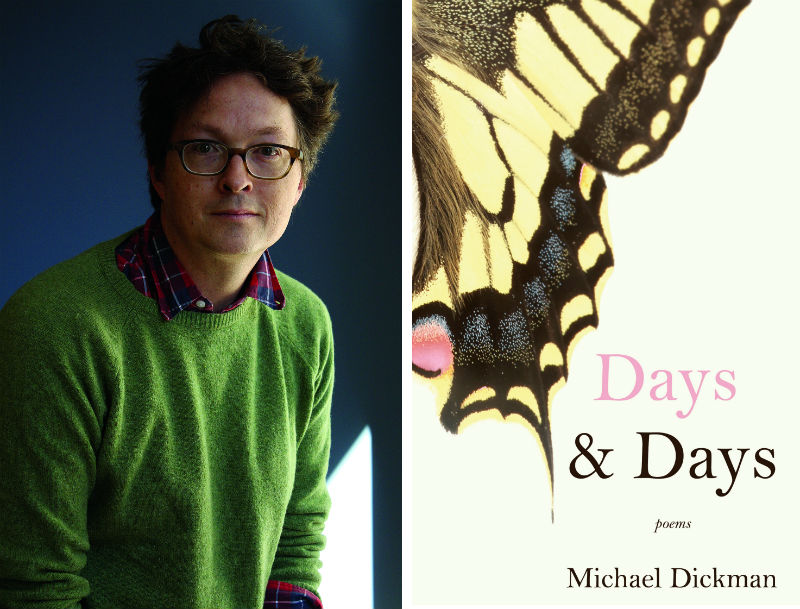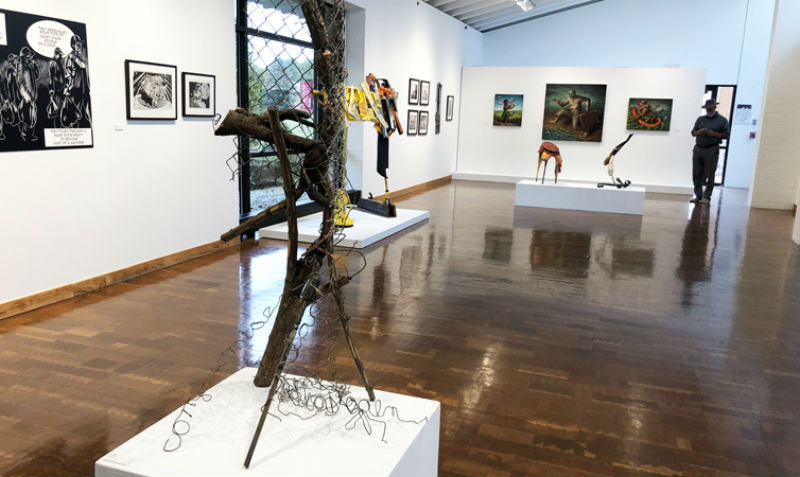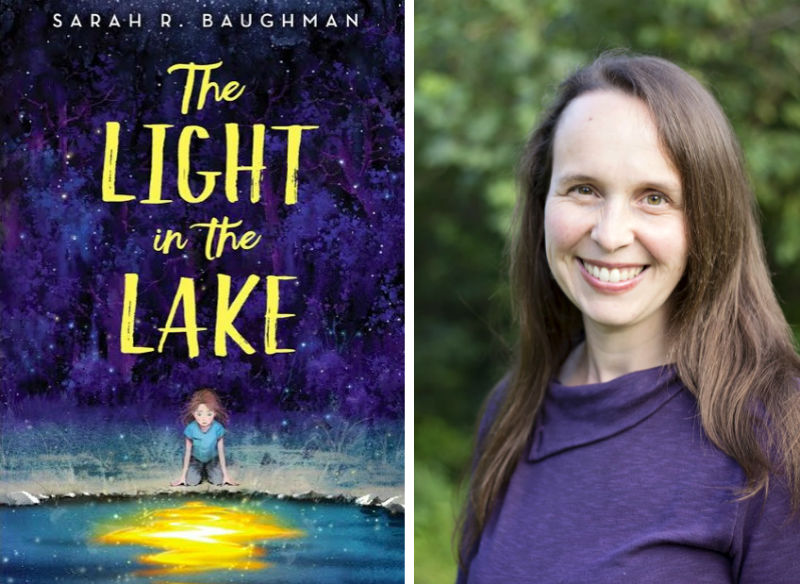Happy Halaloween: Exploring horror films in the Islamic world

Marlon Brando's Perfecto leather. James Dean's brooding teenage rebellion. Marilyn Monroe's ethereal, platinum blonde beauty.
It's a testament to the power of Hollywood that so few words can summon such vivid 20th-century American iconography.
Even no-frills popcorn fare like The Day After Tomorrow can have "significant impact" on public awareness according to a 2004 Yale study on Climate Change Risk Perception.
But if these pop-culture dreamscapes can embed in the cultures in which they were conceived, what happens when that product is consumed in foreign cultures, especially those with a different majority religion?
Two events at the University of Michigan will explore this question: Dr. Alireza Doostdar, assistant professor of Islamic studies and the anthropology of religion at the University of Chicago Divinity School, will discuss Hollywood Horror in Iran on Tuesday, September 24, at 4 pm in Room 555 of Weiser Hall and U-M's Global Islamic Studies Center and The Michigan Theatre will present Halaloween: A Muslim Horror Film Fest every Tuesday at 9 pm throughout October. Each film is presented free to the public with English subtitles.
Beer captivates and divides a family in J. Ryan Stradal's new Midwestern saga, "The Lager Queen of Minnesota"

Beer and pie remain constant for characters through rifts, tragedies, and changes in J. Ryan Stradal’s new book, The Lager Queen of Minnesota. The novel follows two sisters, Helen and Edith, as they come of age and make lives for themselves. Yet their paths diverge when Helen taps their father for all the money from the sale of the family farm, which divides the family. Edith becomes known for her pies, hops between service industry jobs, and endures several major losses, all while bottling her feelings about the uneven inheritance. Helen pores over chemistry and learns to make beer in college, and then she grows a large, successful brewery with the help of the farm proceeds. When Edith’s granddaughter, Diana, inadvertently enters the beer business, their paths head toward each other again.
Chapters in this plot-driven yet poignant novel alternate the focus between characters and are titled by various sums of money exchanged within them. The backstory and present lives of the three female main characters are blended throughout the chapters as Diana’s story parallels Helen’s in some ways. It is not only about what is happening or has happened, though. The novel also lingers on nostalgic or emotional moments. When Edith loses her husband, Stanley, the narrator describes that:
Her grief was a forest with no trails, and she couldn’t guess how long her heart would walk through it, as her body walked other places. For half a century, she had seen or spoken with this man almost every day, so his life didn’t end when he died; it found its way into cereal aisles and intersections and post office lines and conversations she didn’t intend.
It’s clear that Edith cares deeply about those around her even as she struggles to get by.
The characters don’t succumb to bitterness despite challenges to support themselves, and they celebrate their successes in an industry that fluctuates based on consumers’ preferences. Beer aficionados and foodies might appreciate the well-crafted descriptions of brewing methods and tasting notes. One passage describes “Grandma Edith’s Rhubarb-Pie-In-A-Bottle” ale as such:
The beer has a fluffy pink two-finger head and smells like malty rhubarb, so it’s certainly not out to fool anybody. ... This beer is flawed, wonderful, and strange in a way only a certain individual could devise, and it renders every other beer on the shelf a faceless SKU.
This review of her beer illustrates Edith’s and other characters’ work ethics and distinct Midwestern traits.
Stradal has first-hand knowledge of the setting, as he grew up in Minnesota. He now lives in Los Angeles and is a contributing editor at TASTE, an online magazine about food and cooking. His first novel is Kitchens of the Great Midwest. He reads at Literati Bookstore on Tuesday, September 24, at 7 pm, and I interviewed him ahead of time.
Encore Theatre's production of the Tony-winning "Fun Home" passes the test

When I first read Alison Bechdel’s 2006 graphic memoir Fun Home -- the basis for a Tony Award-winning musical of the same name, now on stage at Dexter’s Encore Theatre -- I immediately sent copies of the book out to my three closest girlfriends.
It wasn’t Christmas or anyone’s birthday, but I couldn’t contain myself. Bechdel’s groundbreaking, bracingly candid, and bittersweet chronicle of a family tragedy gripped me so profoundly that my first, undeniable impulse was to share her story with others.
The stage musical adaptation -- with music by Jeanine Tesori, and book and lyrics by Michigan’s own Lisa Kron -- necessarily pares Bechdel’s tale down to its essentials, but it’s no less poignant while depicting Bechdel’s gleeful, college-age “coming out” and, shortly thereafter, her closeted father’s sudden suicide.
At Encore, Sarah B. Stevens plays the always-on-stage, present-day version of Bechdel, who’s struggling to sketch out and narrate her family’s history. (The “Fun Home” of the title is the nickname Alison and her younger brothers had as kids for the funeral home that has long been the Bechdels’ “family business.”) As she draws, she remembers various moments from her childhood and college days as they play out in front of her, until she finally can’t resist inserting her present-day self into the last late-night drive she ever took with her father (Daniel C. Cooney), urging herself to say something that will alter the course of what’s about to happen.
Retired U-M professor Bruce Conforth co-authored the definitive biography of blues legend Robert Johnson

Decades of painstaking research and meticulous attention to detail have led to the 2019 book Up Jumped the Devil: The Real Life of Robert Johnson, which aims to rewrite and correct the story about the legendary bluesman. Co-authored by retired U-M professor Bruce Conforth and Gayle Dean Wardlow, this book entertains with facts, cut through myths, and lets readers learn about a man who has for too long been reduced to a single (and impossible) anecdote about trading his soul to the devil down at the crossroads in order to play the blues.
“When Columbia released its Thesaurus of Classic Jazz [in 1959], it was the first chance for most country-blues artists to have their recordings on a major label," Conforth says. "Most people didn’t even know that these folks existed. And on this record was Robert Johnson. … The liner notes said that he was the greatest blues musician there ever was, but we had nothing to compare him to and didn’t know anything about him. Almost immediately this mystique formed around Johnson while at the same time people were saying, ‘Oh, we’ll never know anything about him.’”
Conforth, who grew up in and around New York City during the 1960s folk revival, took that as a challenge.
Highway I-94, M-14 & US-23 Revisited: A comprehensive history of Bob Dylan in Ann Arbor

When Bob Dylan plays Hill Auditorium on November 6, it'll be the 12th time he's played Ann Arbor (and the 13th time in Washtenaw County when counting his 2007 concert with Elvis Costello at EMU Convocation Center).
But unlike what is sometimes stated, his first solo show was not September 9, 1964, at Ann Arbor High School (now Pioneer); it was on April 22, 1962, at the Union Ballroom as part of the Ann Arbor Folk Festival. That show is sometimes forgotten about by writers because they have to expand their concert-database searches to find it: Dylan, who had released his self-titled debut LP the month before, was so little known that he was mistakenly advertised as "Bob Dillon," as shown in this ad in The Michigan Daily.
Another Daily ad, reprinted in Neil Cossar’s 2018 book Bob Dylan: The Day I Was There, showed Dylan's name spelled correctly and also quotes Jay Margulies about the 1962 concert and its afterparty:
Poet, Princeton lecturer, and former Zingerman's employee Michael Dickman accounts for days line by line in new collection

Days go by in many sorts of ways: hectic, enjoyably, dragging, intensely, calmly, explosively, gratifyingly. They can take on not just one but a range of characteristics. I am convinced that poet Michael Dickman goes through his days attentively if his poems are any indication of how he lives.
Drawing on nature and circumstances, Dickman’s new collection, Days & Days, reveals observations about parenthood, television, love, hotel stays, prescription drugs, and bodies of water. The poems are associative. Lines next to each other may seem unrelated and abstract at times, and then a line a few pages later will relate to a previous thought. The longest poem, “Lakes Rivers Streams,” reads:
This is the earth & sometimes the earth
changes color
Now I remember they were horses mulching the backyard
The horse metaphor for children continues:
My horse kids eat something off the ground I can’t quite make out
and
What should I do with their withers & fetlocks what should I do with
their dressage?
A parade is nice
These lines capture the variety and vicissitudes of days, whether with children or other topics. One wonders if Dickman is constantly jotting down fragments as he goes through his days and later fits them together into cohesive poems.
Formerly of Ann Arbor, Dickman now teaches at Princeton University. He reads at Literati Bookstore on Friday, September 20, at 7 pm. I interviewed him prior for Pulp.
The 2019 edition of Rasa -- Akshara's annual multi-arts, inspired by India festival -- hits the home stretch

The fall 2019 edition of Akshara's Rasa Festival is coming to a close, but not before it celebrates with four "multi-arts, inspired by India" events.
"Dances of India: classical and folk traditions" happens Thursday, September 19, at 7 pm, at AADL's downtown location. It will feature classical and folk dances from India, plus a discussion on the historical and cultural context of each.
The following night at 7 pm will be "Music from the East and the West," also at AADL's downtown branch. Indian and western musicians will talk about the concepts behind Indian and western music, and how they collaborate to create new music. This will be accompanied by a short concert.
The largest event of the festival is "Rasa Performing Arts Weekend: dance|music, east|west, classical|folk" on Saturday, September 21, 4 pm, at Towsley Auditorium, Washtenaw Community College. This is an evening of classical and folk dances from India as well as a concert that brings together Indian and western music traditions.
"Textures of Detroit" at Concordia University’s Kreft Gallery feels like two exhibitions at once

Textures of Detroit, now on exhibit in Concordia University’s Kreft Gallery through October 23, presents the work of six Detroit artists as they respond to their urban environment through the prism of personal experience. It’s an odd, conjoined-twin sort of exhibit.
There are really two exhibits on view here. In Exhibit A, with Matt Corbin, Ann Smith and Carole Harris, who take their inspiration from the materiality of the city, a time-honored Detroit method recently highlighted in Landlord Colors at Cranbrook Museum of Art. And then there’s Exhibit B: in which Roy Feldman, Carl Wilson, and Peter Bernal observe and report on the human dimensions of Detroit.
Sarah R. Baughman's middle-grade book "The Light in the Lake" marries science and magic

Sometimes it feels like monsters are everywhere and the world is out to get you. At times like this, we all need some magic in our lives to make it better. For 12-year-old Addie, whose twin brother Amos died recently, these truths can all be found in Maple Lake.
Addie is the protagonist in Sarah R. Baughman’s debut novel, The Light in the Lake, and she spends much of the book in the coveted role of a summertime Young Scientist studying the very lake where her brother drowned three months ago. Using a notebook that Amos left behind and with the help of her new friend Tai, Addie learns that the lake has secrets that include both those of a scientific nature (pollution) and of a more supernatural nature (a mysterious creature described by Amos as living deep inside the lake). Addie straddles the two worlds, one foot firmly in her trusted science and the other not so firmly in a magic realm that she’s not quite sure she believes in but one that might ultimately bring her closer to her late brother.
U-M grad and Michigan native Baughman says she has always been interested in the “connection between these seemingly different ways of looking at the world.” Though not a scientist by training, “I deeply value scientific knowledge and approaches to problems.”
Ann Arbor jazz musicians interpret guitarist Sonny Sharrock's avant-jazz masterpiece "Ask the Ages"

Sonny Sharrock played guitar like a boxer throws punches: with fluidity and violence. Sweet-science superfan Miles Davis must have recognized this when he had Sharrock join John McLaughlin in the ax section for the trumpeter's stellar 1971 jazz-rock soundtrack for a documentary on the boxer Jack Johnson.
In the mid-'60s, Sharrock began about a decade-long run playing with his singer wife, Linda, saxophonist Pharoah Sanders, flutist Herbie Mann, and others, but he went into semi-retirement from music after divorcing. As with many singular stylists, Sharrock's skills weren't fully appreciated when he first came onto the scene, but his reputation rose up in the 1980s when bassist and producer Bill Laswell recruited him to play in his avant-funk jazz band Material and the punk-jazz supergroup Last Exit. During this time, Sharrock resumed his career as a leader and also played free jazz with Machine Gun, with everything culminating in the 1991 avant-jazz-rock masterpiece Ask the Ages, a Laswell-produced album featuring Sanders on sax, Elvin Jones on drums, and Charnett Moffett on bass. (Sharrock also did soundtrack work for the Cartoon Network classic Space Ghost Coast to Coast.)
But on the eve of signing to a major label, Sharrock died in 1994 at the age of 53. While he died too young, the guitarist's reputation as a major force was sealed forever.
On September 11 at Ziggy's in Ypsilanti, four Ann Arbor jazz musicians will fete Sharrock's Ask the Ages by playing the album in its entirety. Guitarist Max Bowen transcribed the music on Ask the Ages, which he'll interpret with saxophonist Andrew Bishop, bassist Aidan Cafferty, and drummer Bob Sweet.
I interviewed Sweet and Bowen about Sharrock, Ask the Ages, and how this project came together.


































